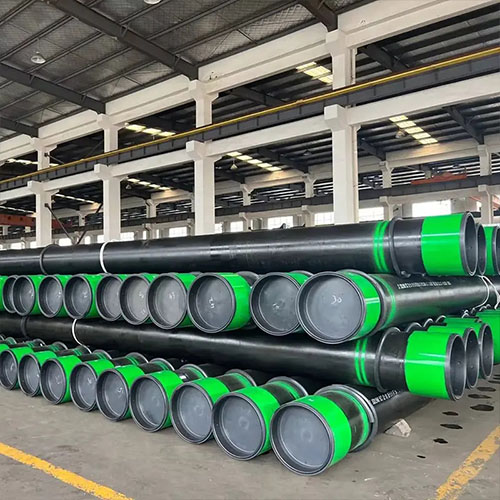Pros and Cons of Using Welded steel Pipes in construction Projects
Welded steel pipes are a popular choice in construction projects due to their cost-effectiveness and durability. However, there are certain compromises that come with using welded steel pipes that need to be considered before making a decision.
One of the main advantages of using welded steel pipes is their cost-effectiveness. Compared to seamless steel pipes, welded steel pipes are generally more affordable, making them a preferred choice for projects with budget constraints. Additionally, welded steel pipes are readily available in various sizes and specifications, making them versatile for a wide range of applications in construction.

Fuel hoseAnother benefit of using welded steel pipes is their strength and durability. Welded steel pipes are able to withstand high pressure and temperature, making them suitable for use in demanding environments. they are also resistant to corrosion, which helps to prolong their lifespan and reduce maintenance costs over time.
However, there are some drawbacks to using welded steel pipes that need to be taken into consideration. One of the main concerns with welded steel pipes is the potential for defects in the welding process. If not done properly, welding can create weak points in the pipe that may compromise its structural integrity. This can lead to leaks, cracks, or even catastrophic failure in extreme cases.
domestic heating Oil pipe 10mmAnother issue with welded steel pipes is the risk of corrosion at the weld seam. The heat-affected zone around the weld can be more susceptible to corrosion than the rest of the pipe, especially in environments with high levels of moisture or chemicals. This can lead to premature failure of the pipe and the need for costly repairs or replacements.
In addition, welded steel pipes are more prone to stress corrosion cracking than seamless steel pipes. This type of corrosion occurs when a combination of tensile stress and a corrosive environment causes cracks to form in the pipe. While proper maintenance and monitoring can help to mitigate this risk, it is still a concern that needs to be addressed when using welded steel pipes in construction projects.
Despite these drawbacks, welded steel pipes continue to be a popular choice in construction due to their cost-effectiveness and versatility. By understanding the potential compromises that come with using welded steel pipes, project managers can make informed decisions about whether they are the right choice for their specific needs.
In conclusion, welded steel pipes offer a cost-effective and durable solution for construction projects, but they come with certain compromises that need to be considered. By weighing the pros and cons of using welded steel pipes, project managers can make informed decisions about whether they are the best option for their specific requirements.
Impact of Welded Steel Pipe quality on Long-Term Durability and Maintenance Costs
Welded steel pipes are a popular choice in various industries due to their cost-effectiveness and durability. However, the quality of welded steel pipes can have a significant impact on their long-term durability and maintenance costs.
One of the key factors that determine the quality of welded steel pipes is the welding process used. There are several different welding processes that can be used to create welded steel pipes, including arc welding, resistance welding, and high-frequency induction welding. Each of these processes has its own advantages and disadvantages, and the choice of welding process can have a significant impact on the quality of the finished product.
Arc welding, for example, is a common welding process used in the production of welded steel pipes. This process involves using an electric arc to melt the edges of the steel plates that are being welded together. While arc welding is a relatively fast and cost-effective process, it can also result in a lower-quality weld that is more prone to defects and failures.
Resistance welding, on the other hand, involves passing an electric current through the steel plates that are being welded together, causing them to heat up and fuse together. This process can produce high-quality welds that are strong and durable, but it can also be more expensive and time-consuming than arc welding.
High-frequency induction welding is another popular welding process used in the production of welded steel pipes. This process involves using high-frequency electrical currents to heat the edges of the steel plates that are being welded together. While high-frequency induction welding can produce high-quality welds that are strong and durable, it can also be more complex and expensive than other welding processes.
In addition to the welding process used, the quality of the steel used in the production of welded steel pipes can also have a significant impact on their long-term durability and maintenance costs. High-quality steel that is properly treated and coated can result in welded steel pipes that are more resistant to corrosion, wear, and other forms of damage. On the other hand, low-quality steel that is not properly treated or coated can result in welded steel pipes that are more prone to defects and failures.
Proper maintenance and inspection of welded steel pipes are also crucial for ensuring their long-term durability and minimizing maintenance costs. Regular inspections can help identify any potential issues or defects early on, allowing for timely repairs or replacements to be made. Additionally, proper maintenance practices, such as cleaning, coating, and lubricating welded steel pipes, can help extend their lifespan and reduce the risk of costly repairs or replacements.
In conclusion, the quality of welded steel pipes can have a significant impact on their long-term durability and maintenance costs. The choice of welding process, the quality of the steel used, and proper maintenance practices all play a crucial role in determining the overall quality and lifespan of welded steel pipes. By investing in high-quality welded steel pipes and implementing proper maintenance and inspection practices, industries can ensure that their infrastructure remains strong, durable, and cost-effective for years to come.
fiberglass casing oil well
